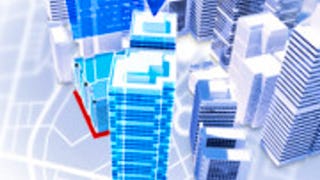This course is intended to introduce students to CyberGIS—Geospatial Information Science and Systems (GIS)—based on advanced cyberinfrastructure as well as the state of the art in high-performance computing, big data, and cloud computing in the context of geospatial data science. Emphasis is placed on learning the cutting-edge advances of cyberGIS and its underlying geospatial data science principles.

Gain next-level skills with Coursera Plus for $199 (regularly $399). Save now.

(30 reviews)
Recommended experience
Skills you'll gain
Details to know

Add to your LinkedIn profile
6 assignments
See how employees at top companies are mastering in-demand skills

There are 5 modules in this course
You will become familiar with the course, your classmates, and our learning environment. The orientation will also help you obtain the technical skills required for the course.
What's included
1 video3 readings1 assignment2 discussion prompts1 plugin
In this module, we will get introduced to the basics of CyberGIS and Geospatial Data Science. First, we'll learn about the definition of Geographic information science and systems, and related concepts. Next, we'll get introduced to the basics of advanced cyberinfrastructure and its components. Then we will see how CyberGIS combines Cyberinfrastructure and GIS to produce a sum that is greater than its parts. We will see the components of CyberGIS and the community and sciences it supports. Then, we look at geospatial big data, specifically the complexity and challenges it presents in terms of data representation, sharing, and privacy. We then look at how Geospatial Data Science provides tools to resolve the challenges posed by big geospatial data. Finally, we conclude the lesson by looking at scientific applications and drivers that require CyberGIS and Geospatial Data Science to address the problems posed by them.
What's included
6 videos1 reading1 assignment
In this module, students will get introduced to techniques for geospatial visualization and Web mapping using Python. First we'll learn about the basics of plotting geospatial data and creating maps using Matplotlib, Basemap, and Cartopy. Next, we will learn techniques to create and share our Web maps using Mplleaflet and Folium libraries. Lastly, we will see a brief introduction to GeoPandas and how to use it to do simple plot, simple geometry, and conduct basic spatial operations.
What's included
5 videos1 reading1 assignment
In this module, students will get first get introduced to techniques for manipulating geospatial objects using geospatial libraries in Python. Specifically, we will learn how to manipulate both vector and raster data objects using Shapely and RasterIO libraries. Next, students get introduced to using the Hadoop paradigm for taming big geospatial data. Specifically, we will learn the fundamentals of how to process big spatial data with Hadoop. Students will get a brief introduction to the Hadoop framework, its major components, and its characteristics, and will learn about Hadoop Distributed File System (HDFS), its architecture and simple commands to interact with it. We will also learn about the MapReduce computing paradigm and see an example of how it may be applied using Hadoop streaming API to process New York City taxi data.
What's included
5 videos1 reading1 assignment
In this module, we will learn about the theoretical underpinnings of CyberGIS. We will start the module by looking into theoretical foundations of cyberGIS, specifically looking at the computational intensity calculations. Then we will apply the theoretical concepts to an application case study learning how to calculate this computational intensity. Lastly, we will conclude the module and course by looking at some future trends.
What's included
4 videos2 readings2 assignments1 plugin
Instructors


Offered by
Explore more from Data Analysis
 Status: Free Trial
Status: Free TrialUniversity of Toronto
 Status: Free Trial
Status: Free TrialL&T EduTech
 Status: Free Trial
Status: Free TrialL&T EduTech
 Status: Free Trial
Status: Free TrialUniversity of California, Davis
Why people choose Coursera for their career




Learner reviews
30 reviews
- 5 stars
50%
- 4 stars
36.66%
- 3 stars
6.66%
- 2 stars
0%
- 1 star
6.66%
Showing 3 of 30
Reviewed on Feb 18, 2022
Very interesting, it goes hand in hand with cyber-geoint, which is enormous for business.

Open new doors with Coursera Plus
Unlimited access to 10,000+ world-class courses, hands-on projects, and job-ready certificate programs - all included in your subscription
Advance your career with an online degree
Earn a degree from world-class universities - 100% online
Join over 3,400 global companies that choose Coursera for Business
Upskill your employees to excel in the digital economy
Frequently asked questions
To access the course materials, assignments and to earn a Certificate, you will need to purchase the Certificate experience when you enroll in a course. You can try a Free Trial instead, or apply for Financial Aid. The course may offer 'Full Course, No Certificate' instead. This option lets you see all course materials, submit required assessments, and get a final grade. This also means that you will not be able to purchase a Certificate experience.
When you purchase a Certificate you get access to all course materials, including graded assignments. Upon completing the course, your electronic Certificate will be added to your Accomplishments page - from there, you can print your Certificate or add it to your LinkedIn profile.
Yes. In select learning programs, you can apply for financial aid or a scholarship if you can’t afford the enrollment fee. If fin aid or scholarship is available for your learning program selection, you’ll find a link to apply on the description page.
More questions
Financial aid available,

